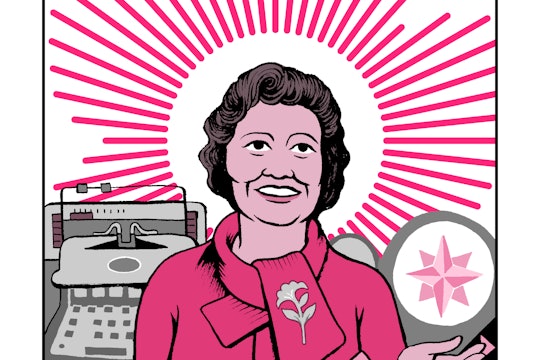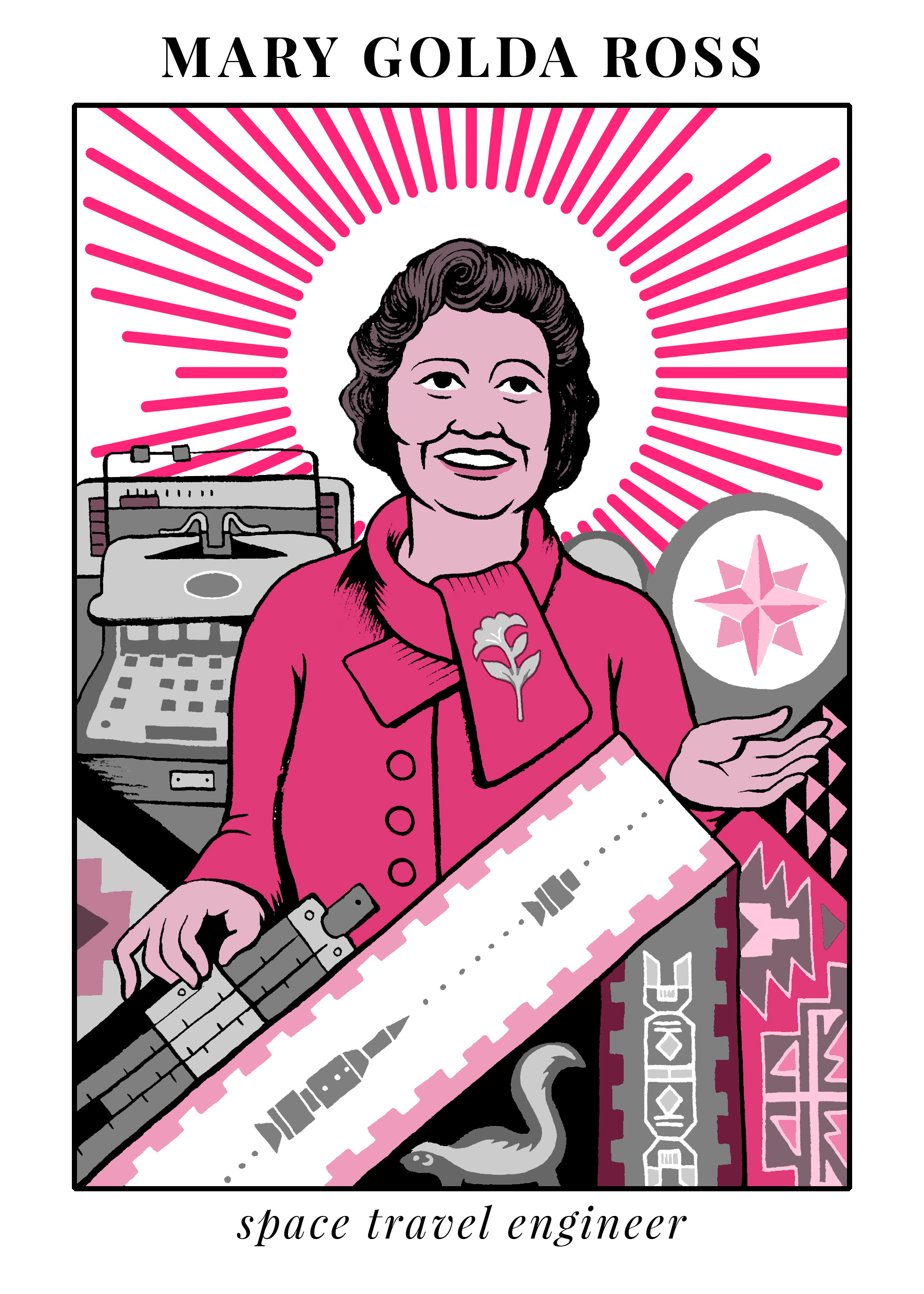
Matteo Farinella
Meet Mary Golda Ross, one of the first Native Americans in engineering
Much of her Cold War work on missiles is still classified today
A woman in a long evening gown and elegantly coiffed hair walked on to the stage of "What’s My Line?" in 1958 and completely stumped panelists attempting to guess her occupation.
The woman was Mary Golda Ross – one of the first female engineers, best known for her mathematical genius during the early days of spaceflight. She reached for the stars, inspiring countless people, and leaving lasting contributions in her field.
Mary Golda Ross was born in 1908 in a Cherokee community of Park Hill, OK. (Her great-great grandfather, Chief John Ross, was the longest-serving chief of the Cherokee Nation. He fought for Cherokee rights and later, was forced to lead his people on the march known as the Trail of Tears.) From a young age, she gravitated toward mathematics and science. Often the only girl in the math and science classes, she recollects that she “could hold her own with [the boys] and sometimes did better.” Her ambition drove her to complete high school by the age of 16. She graduated from the Northeastern State Teacher’s College with a BA in 1928, a feat that less than 2 percent of women during this era accomplished. Her degree in mathematics and her Cherokee cultural heritage led her to work as a statistician for the Bureau of Indian Affairs and then as an adviser for Native American students at a boarding school in New Mexico.

Matteo Farinella
Returning to school to pursue a master’s degree in mathematics at the Colorado State Teacher’s College (now University of Northern Colorado), Ross took astronomy classes and read voraciously about stars. Ross was one of a handful of female mathematicians when she started at Lockheed Martin Aircraft Corporation in California in 1942. Joining during the height of World War II, she worked primarily on military aircraft. Ross was particularly focused on the P-38 Lightning, a fighter plane that came close to breaking the sound barrier.
After the war ended, Ross went to UCLA to earn qualifications in aeronautical engineering and then began to advance through the company’s male-dominated ranks. She joined the new Missiles Systems Division at Lockheed Martin Skunk Works, a top-secret think-tank, in 1954 and was the only female engineer of the 40 employees selected for this group. She was highly regarded by her coworkers, and she worked on defense systems and contributed to space exploration. Much of the work she did with this group is still classified.
Her work in the 1950s and 60s, during the heart of the Cold War, concentrated on satellite orbits and the Aegna space rocket project, an essential component that helped put man into space via the Apollo space program. She recalls working late into the night using her cutting-edge tools: a slide rule and a Friden computer, to turn theory into reality. Ross helped author the NASA Planetary Flight Handbook, about space travel to Mars and Venus, as later in her career she undertook research on space probes that would study these planets. Though best known for her work with flight and ballistic missiles, she also studied how pressure caused by ocean waves affected submarine-launched vehicles.
Not only was Ross a female pioneer in engineering, she was also one of the first Native Americans in this field. She linked many of her successes to the importance that her Cherokee tribe placed on equal education for boys and girls, and the rich heritage of the Cherokee people. After retiring in 1973 at age 65, she focused on mentoring and recruiting women and Native Americans to the engineering field with the advice: “To function efficiently in today’s world, you need math. The world is so technical, if you plan to work in it, a math background will let you go farther and faster.” When nominated for awards, Ross was modest and quick to mention her coworkers. In 1992, she was inducted into the Silicon Valley Engineering Council’s Hall of Fame for her pioneering research into ballistic missile systems, manned and unmanned earth-orbiting flights, and interplanetary space travel missions.
The Smithsonian Museum of the American Indian opened in Washington DC in 2004, with Ross wearing her ancestral dress in a procession with the largest gathering of Native American communities in history. When she died in 2008, just a few months short of turning 100 years old, she bequeathed $400,000 to the museum to help tell the ongoing story of the American Indian. Ever the mathematician, she requested the donation be placed into an endowment, so that the principal would continue to give. Chad Smith, Principal Chief of the Cherokee Nation, sums up Mary Golda Ross and her lasting legacy: “This exceptional woman was and will continue to be a great example to each of us.”
